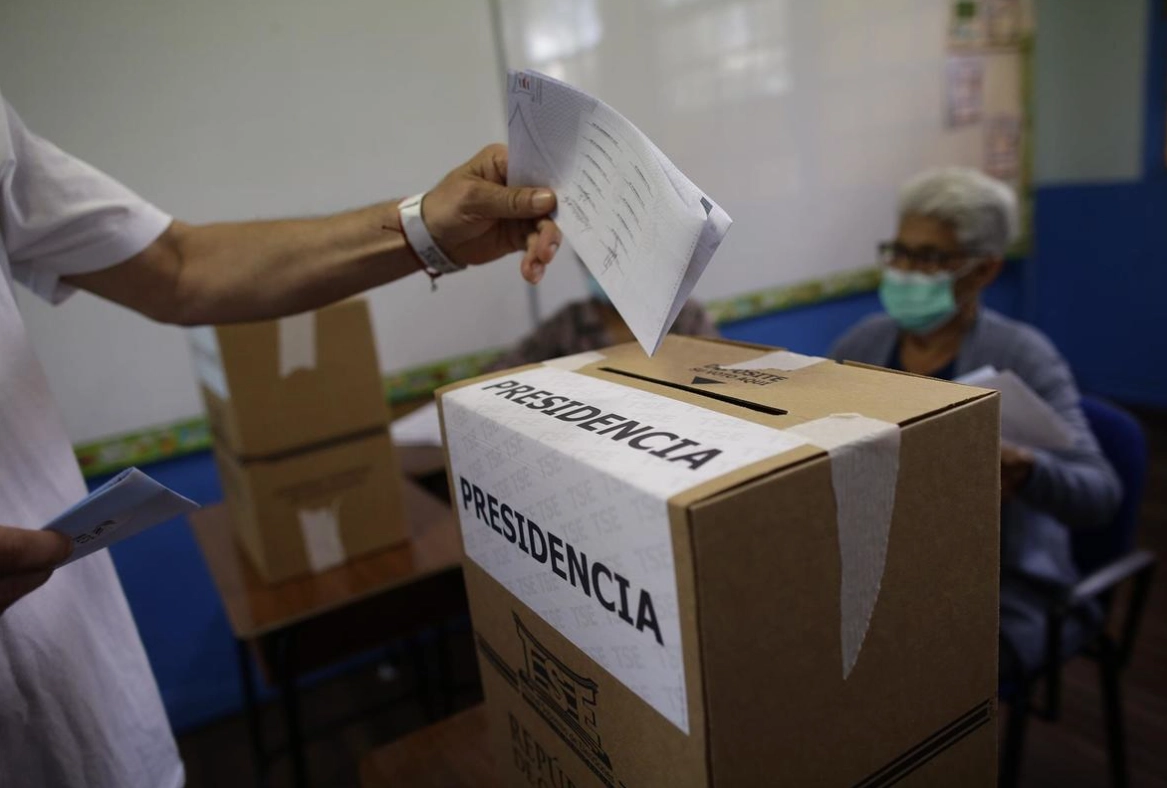A few days before the election this Sunday, April 3, when Costa Ricans will go to the polls to elect the next president, the campaign scenario shows some changes. The polls continue to show former minister Rodrigo Chaves as the winner, against former president José María Figueres, but the distance between them has reduced significantly. The opinion poll carried out by the University of Costa Rica, which at the beginning of March gave Chaves an 11 point lead, in its latest poll places him only four points ahead. Nevertheless, results from other pollsters (Opol, IDESPO, Enfoques) continue to give Chaves the comfortable initial advantage. What has increased is the percentage of voters who reject both candidates and of undecided voters, which has risen from 15% to 18%. There are even groups openly calling for abstention or spoilt vote.
The course of the campaign shows more and more clearly the difference between the surface swells and the rough movements of the groundswell. In the last week, several events have affected the image of both candidates, which have been used by both sides to fill the electoral contest with personal and unedifying invectives.
The Figueres campaign has committed gross errors such as the candidate’s trip to the Dominican Republic paid by a well known businessman, or the broadcasting of an unpresentable video showing several young people jumping into the void from the terrace of a building, to stage that voting for Chaves represents a leap into the void.
On the part of candidate Rodrigo Chaves, who cannot get over the memory of the accusation of harassment when he worked at the World Bank, the most serious problem is the prosecution by the Supreme Electoral Tribunal regarding illegal financing of his campaign. This was allegedly done through a trust created before he officially presented his candidacy but which purportedly continued to operate afterwards. It is a question to know whether the Court will issue a sentence before the elections and what the consequences would be for Chaves if he or members of his team are found guilty.
Beneath these surface movements, which may prove to be decisive, the groundswell that shakes the Central American country presents fewer novelties. Before the start of the first round, nearly 80% of the electorate rejected the status quo. Without having fully emerged from the productive depression caused by the pandemic, a series of corruption cases and the perception that the political elites have not been able or willing to change the situation, have caused a widespread social discomfort. This status, aggravated by low levels of mutual trust, prevented basic consensus on national development.
Facing this outlook, a significant part of the population has sought solutions outside the status quo and, along this path, found Rodrigo Chaves. This candidate, not only came from outside the political class, but also proposed a way of acting that broke with the institutional obstacles that prevented to act to overcome the crisis.
The enormous support for this proposal is related to the Gordian knot that the country has not been able to overcome. It has been said that Costa Rica has become seriously ill of its own success. The country is suffering the consequences of the successful development achieved in previous decades, which compacted institutions and social groups that represent real obstacles in the 21st century, something that is particularly reflected in the State itself.
The configuration of a strong State, with a social aspiration and covering its small territory, seems to have extended the public administration at a faster pace than the increase in its efficiency. This can be seen in the configuration of corporate sectors within it, which slow down any attempt at modification that might give the public apparatus greater flexibility to adapt to new demands. As a result, the State has begun to operate for itself, based on its own public servants’ interests, rather than to satisfy the interests of society.
Thus, when Chaves points out the internal monopolies, inefficient entities or the luxury pensions paid to certain civil servants, he is alluding to real problems that stem from this disease and are recognized by a large part of the citizenry.
From the opposite camp, it is pointed out that the hyper-presidentialism proposed by Chaves puts the country’s institutionality at risk. And the accusation seems well-founded. The problem is that this risk is of less interest to a majority of citizens who demand to attack once and for all the structural problems. This majority, according to the polls, perceives that Figueres’ candidacy is formed by the status quo itself, supported also by a sector of the population that longs for the successful Costa Rica of the past.
On the other hand, the fears generated by Chaves still do not seem enough to overcome the division shown by the other political forces, moved by a vindictive rejection of candidate José María Figueres. According to the UCR study, a high proportion of Social-Christians and PAC voters, the current government party, would be more willing to vote for Chaves than for Figueres. Everything indicates that Sunday’s election result will depend to a large extent on the persistence of this rancorous rejection, in the midst of the rebellion of the common people against the traditional elites.
It seems that in these elections Costa Rica is confronting itself. Something that makes it possible to foresee a complex mandate, whichever candidate wins the presidential chair next Sunday.
Translated from Spanish by Janaína Ruviaro da Silva











